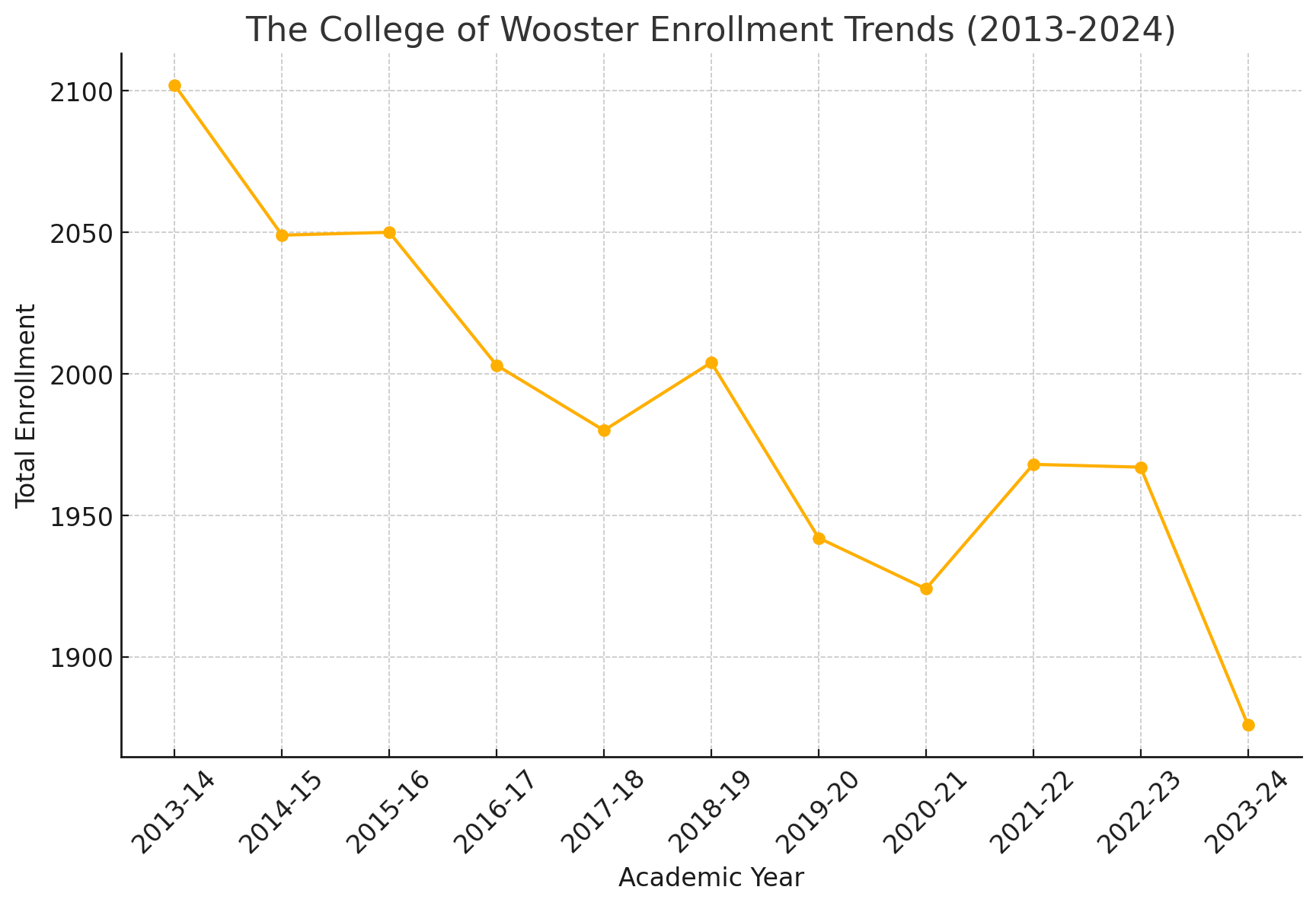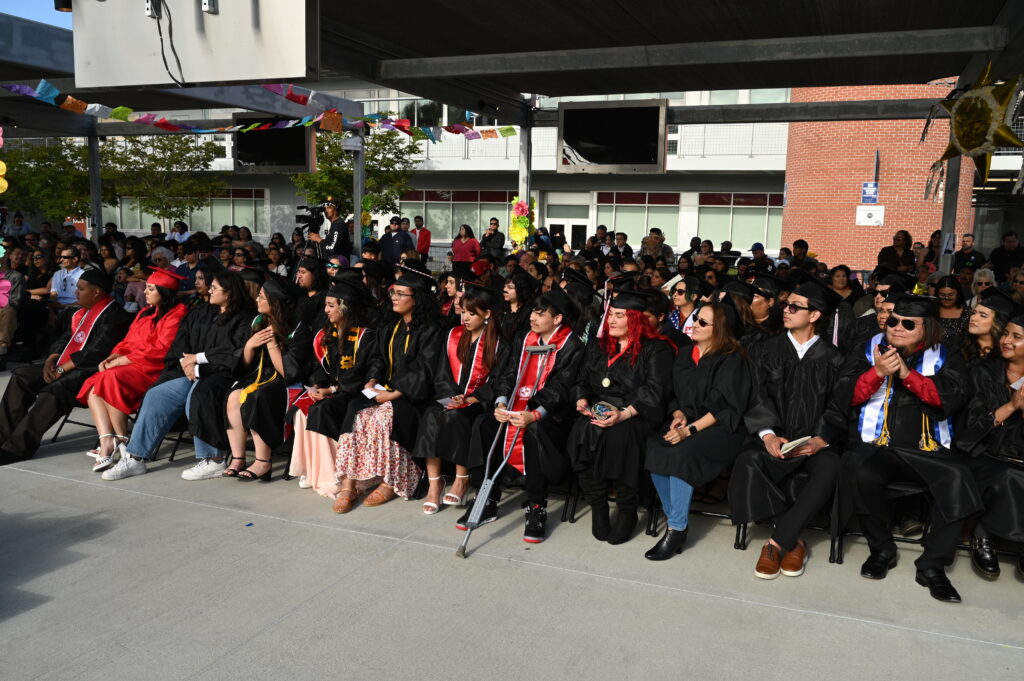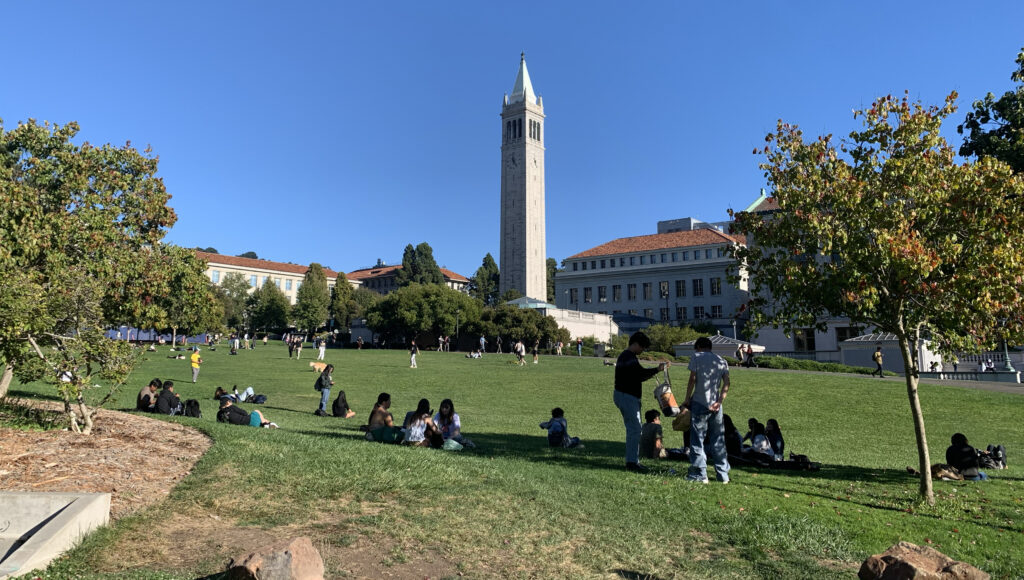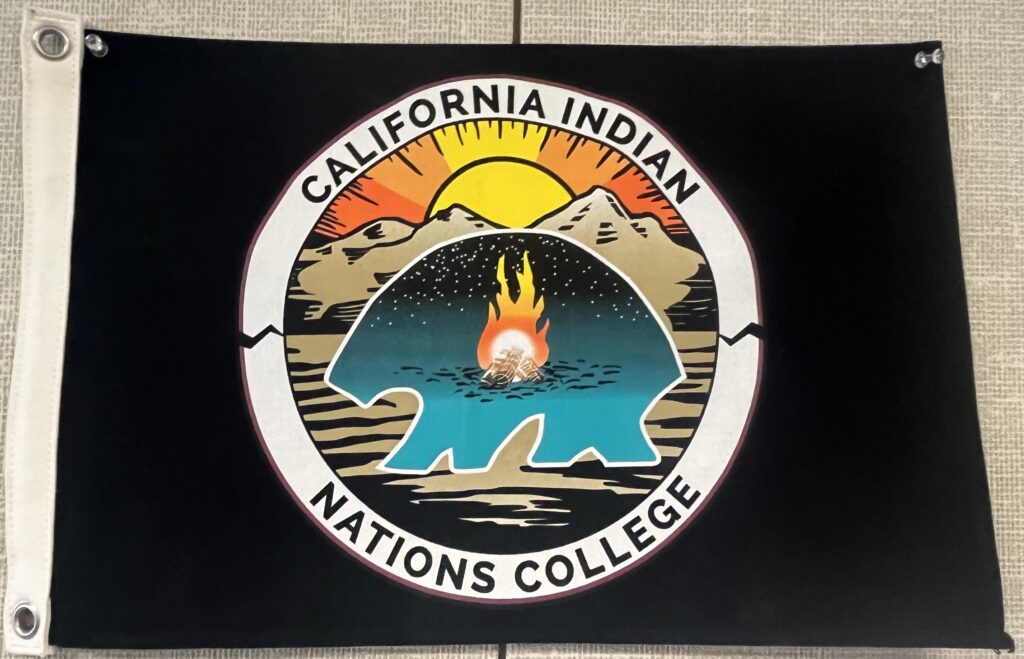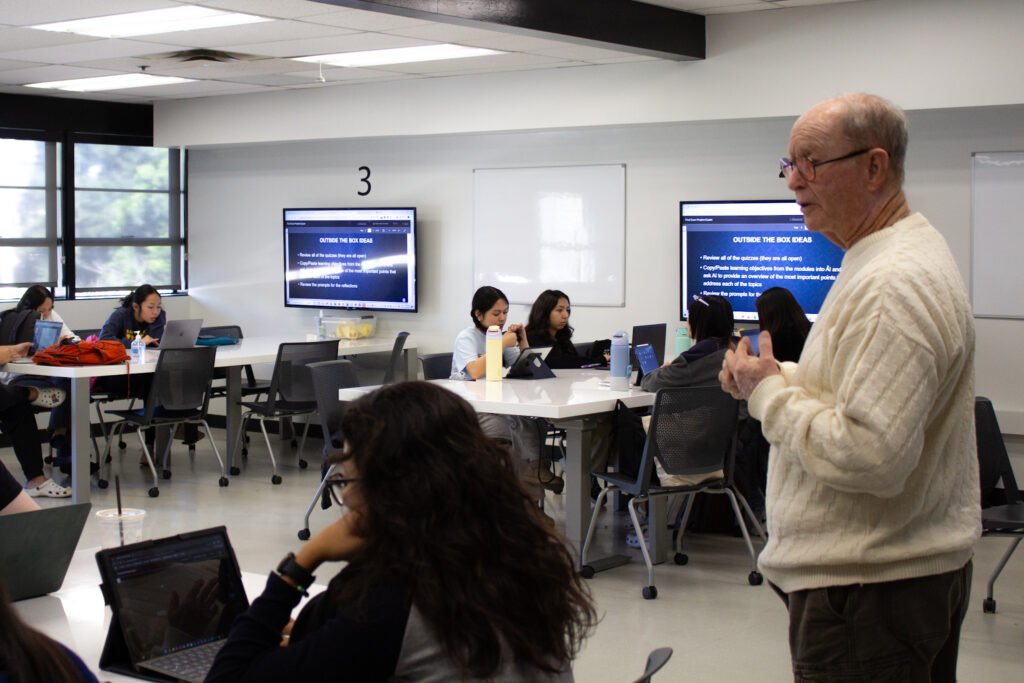
Sky Celine Page, 20, in her subsidized home, which recently opened as part of a collaborative effort between Pasadena City College, Pasadena Community Foundation and First Place for Youth. “If I wasn’t here, and I didn’t have the opportunity to not pay rent, I probably wouldn’t be in school,” she said.
Credit: Betty Márquez Rosales
Sky Celine Page was not so sure that school was for her. She had spent the end of middle school ditching class and high school catching up on assignments as she moved between foster homes, and she was ready to quit college after performing poorly her first two semesters.
“There was so much going on in my mind, and I was always so stressed out that I couldn’t just sit there and focus on schoolwork,” Page said.
Nearly three years ago, she was couch surfing after leaving a foster home, and with nowhere to sleep consistently, school was placed on the back burner.
Page is one of Los Angeles County’s transition-age youth — a term used to describe young adults aging out of the foster system. About 1,000 young people, 18 to 24 years old, age out in L.A. County each year, according to a 2024 report from the California Policy Lab. The same report also found that, in Los Angeles County, about 500 housing slots, including 206 housing vouchers, are available at any given time for youth who are no longer in care and have a closed case with the Department of Family and Child Services. This availability is likely insufficient to meet housing needs, and it doesn’t account for the challenges with accessing such resources, such as the difficulty of navigating complex public agencies.
Studies have shown that transition-age foster youth have a higher risk of homelessness, but there is no reliable count of how many currently are. Housing instability, which at times includes changing schools often, disrupts relationships that students may form with classmates and educators, all of which has been linked to negative impacts on test scores and high school graduation rates, according to multiple studies, including a 2015 brief from the National Education Policy Center.
A collaboration between Pasadena City College, Pasadena Community Foundation and First Place for Youth, an organization that supports successful transition of foster youth to adulthood, is providing housing to transition-age foster youth like Page, 20, who now lives in one of their units.
A six-unit rent-subsidized apartment complex near Pasadena City College, where Page is now a student, opened last August. Ten additional units are being built next door.
“Many of our students were going from group home to group home, carrying their stuff in a trash bag,” said David Sigala Gomez, educational adviser at the college’s program for students with experience in foster care, who provides case management to Page and her neighbors. “A lot of our students didn’t have much because they were moving around so much. So having the means to now buy new clothes, wear new shoes, it just brings a whole different perspective.”
Page’s new, fully-furnished studio apartment is decorated in various shades of pink, with books and school supplies spilling out of her desk that doubles as the dining table where she enjoys journaling. She lives a short drive from her college campus, where she will soon earn an associate degree in health sciences as she pursues nursing.
Page is finally stable and, as she put it, she is healing. Her life now is a paradigm shift from her life just a few years ago, when she was 18 and couch surfing. It is even further from her life at 14 when she first entered the foster system.
‘If I wasn’t here … I probably wouldn’t be in school’
Page was 6 when her mother died. She and her brother were sent to Palmdale in northern Los Angeles County to live with their father and stepmother, whom Page described as “a horrific person.”
Page tried to ignore both how her stepmother would lash out and make inappropriate comments about her and the silence from her father, who most often “turned the other cheek” during arguments, she said.
At 14, Page hit a breaking point. She was in school, but would ditch class often and walk the hallways “trying to make sense of everything that was going on” at home. She made the decision to open up about her disruptive home life to a teacher, who called the Department of Family and Child Services.
“After that, I never went back home,” Page said.
A series of short-term placements later, she was living in a foster home in the Pasadena area, the city where she still lives. She struggled with the transition into foster care and with every move from one placement to another.
“I look at that time and my heart was so broken … because I didn’t understand. I felt like I was being punished; I was trying to get help and now I’m around all these people I don’t know,” Page said. “I just didn’t realize at that time that it would be for the better, but it was hard. It was definitely a hard transition.”
The constant moves also weighed on her academically.
It’s an experience that Sigala Gomez, the educational adviser at Pasadena City College, noted is common among foster students. “I have really high-functioning students; their goal is a master’s degree, I have students who struggle just because of instabilities, moving from different schools,” he said, referring to the students he supports through the Next Up and STARS programs, both for foster youth. “For them, we really have to break it down: ‘Hey, you went to class two weeks in a row. That’s success. That’s a goal.’”
Page enrolled in high school but felt self-conscious about how often she moved and because she “didn’t have the nicest things,” she said. So, she opted to enroll in Pasadena Unified School District’s virtual academy.
It was there that she developed an interest in the sciences after completing an internship with the Huntington Medical Research Institute. When she fell behind on assignments in school, her teachers allowed her to catch up by turning in items late.
Despite the disruptions to her education, Page knew she wanted to graduate from high school. She was aware of the stigma that some foster youth feel when they are unable to complete high school, and she was determined to avoid giving “anybody more of a reason to make them think that I was uneducated,” she said.
It was around this time that she could no longer stay at the foster home where she had been living, so she put her items into a storage unit, and for the next half-year, couch surfed and worked two jobs.
The social worker she was assigned to didn’t appear to understand that she needed help urgently, Page said, so Page reported her — the first time she had taken such an action.
The next social worker quickly connected Page with First Place for Youth, an organization that seeks to break cycles of poverty among young adults aging out of foster care by providing housing.
Page was housed in Alhambra within weeks of making that connection. By this time, it was the fall of 2022. She decided to continue her studies, leaning on her love of learning that she couldn’t tap into for so many years. She struggled, but still enjoyed learning. The commute to Pasadena City College wasn’t helping, especially using public transportation.
She was unaware at the time that the same organization that had housed her was working on a collaboration to convert existing structures into housing near her campus.
The effort included an initial $2 million housing loan agreement with Heritage Housing Partners, the project developer, approved by the City Council’s finance committee in 2022, upped to nearly $2.4 million in 2023, plus $200,000 from the Pasadena Community Foundation and $10,000 from California Community Foundation.
The conversion was completed in August 2024, with First Place for Youth and Pasadena City College providing case management. The college also subsidizes the rent cost via Lancer Care, which is their basic-needs department, in conjunction with Extended Opportunity Programs & Services’ foster programs. The amount subsidized is $1,000 per unit, per month, said Sigala Gomez, and students must be transition-age nonminor dependents to qualify for a unit.
Since moving into her new apartment, Page is feeling more confident, her grades have improved, and she now has the freedom to reflect on her childhood.
“I’ve lived double the life experience,” said Page, contrasting herself with the average 20-year-old. “I’m figuring out, ‘OK, this is what 20-year-olds do. This is normal … this was not normal … this is part of my trauma.”
Page has spent the past two years adjusting to life on her terms. She sees her current housing as her chance at being able to focus solely on school without the burden of unstable housing or the high cost of living in her neighborhood. And that was precisely the point of these housing units, Sigala Gomez said.
With rent, utilities and most school costs covered, Page and her new neighbors have just one primary task: focusing on themselves as they enter adulthood.
“It allows me to go to school without having to worry and stress about cost,” said Page of her housing. “If I wasn’t here, and I didn’t have the opportunity to not pay rent, I probably wouldn’t be in school.”




